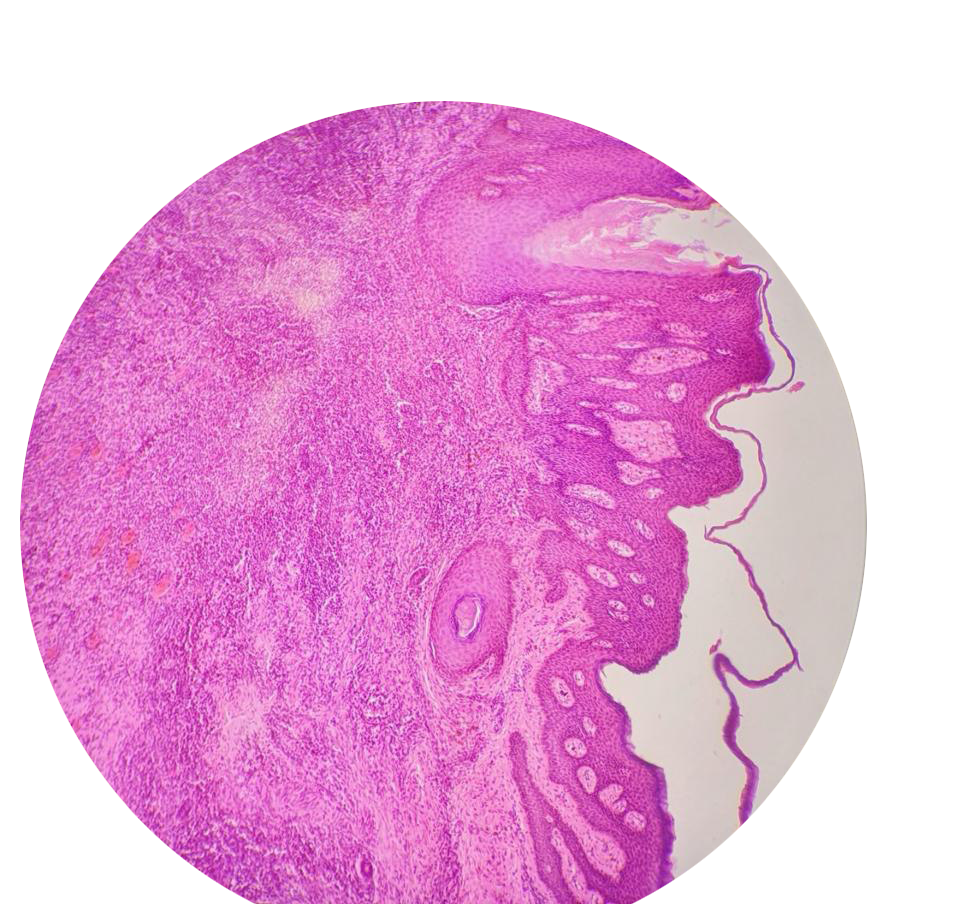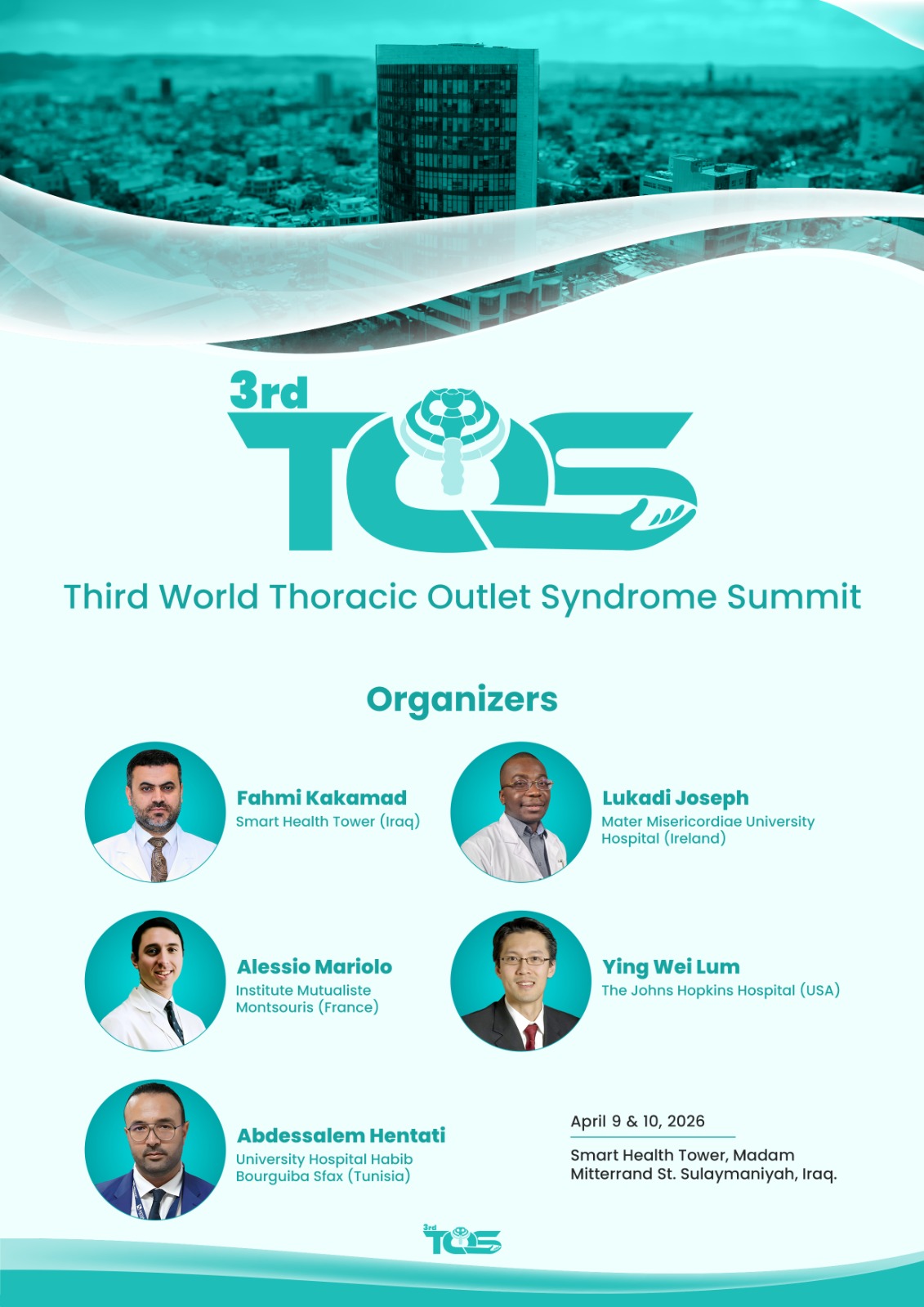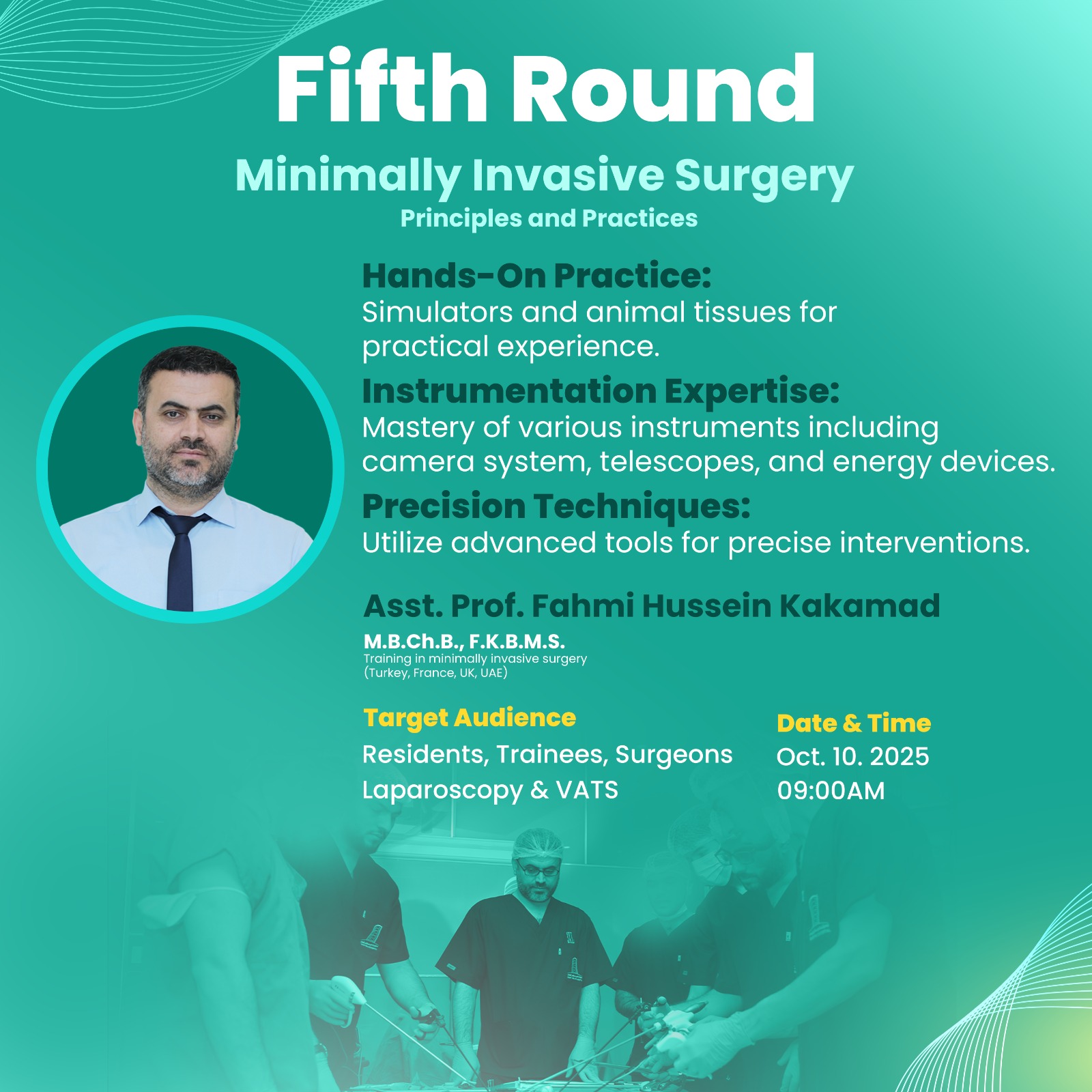Multiple Concurrent Pilonidal Sinuses: Case report and Literature review
Abstract
Introduction: Concurrent pilonidal sinuses (PNSs) at distinct locations are extremely rare. This report highlights an exceptional case of a young female presenting with three PNSs in distinct locations.
Case presentation: A 19-year-old female with a family history of PNS presented with a chronic, discharging sinus tract in the intermammary region that had persisted for two years. Physical examination revealed an erythematous lesion with intermittent purulent and bloody discharge, leading to a diagnosis of intermammary PNS (IMPNS). Surgical excision was performed, and histopathology confirmed the diagnosis. Six weeks postoperatively, the patient’s wound had completely healed; however, she mentioned symptoms in the umbilical and sacrococcyx regions that had been intermittent for the past year. Further evaluation led to diagnoses of natal cleft PNS (NCPNS) and umbilical PNS (UPNS). NCPNS was scheduled for surgical treatment, while UPNS was managed conservatively. Histopathology confirmed chronic sinus tract formation in both cases.
Literatue review: Nine cases of PNS were reviewed, six of which were males. Two of them had recurrent discharging sinuses, and no family history of PNS was reported. Locations included gluteal, auricular, mammary, cheeks, and umbilical regions. Discharge was present in all of the cases, accompanied by pain in two. Sinus excision was performed for all the cases, accompanied by laser epilation in one. Healing modalities included secondary intention and various dressings.
Conclusion: It is extremely rare for NCPNS, UPNS, and IMPNS to occur concurrently. Surgical management for NCPNS and IMPNS, combined with conservative treatment for UPNS, may lead to favorable outcomes.
Introduction
The term "pilonidal sinus" (PNS) was first introduced by Hodges in 1880. However, the condition was initially described by Anderson in 1847 as "hair extracted from an ulcer" [1]. PNS is an inflammatory disorder that occurs when hair penetrates the epidermis, leading to the formation of a blind tract lined with granulation tissue. The condition primarily affects males, with a male-to-female ratio of 4:1 [2]. It typically manifests in individuals in their late teens to early 20s and decreases in frequency after the age of 25. The risk factors for PNS are male gender, a deep natal cleft, hair in the natal cleft, a family history of the condition, jobs that require prolonged sitting, obesity, and excessive sweating. It is frequently observed in drivers, which is why it is also referred to as "Jeep disease." [2]. A large prospective case-control study found that individuals with hirsutism who sit for more than six hours a day and bathe less than twice a week have a 219-fold increased risk of developing sacrococcygeal PNS compared to those without these risk factors [3].
The incidence of PNS has significantly increased over the past 50 years for unknown reasons. It is estimated to affect 26 per 100,000 individuals [4]. PNS was initially considered a congenital condition. However, increasing reports of cases in various anatomical regions suggest it may be an acquired disorder. It most commonly develops in the sacrococcyx region, located near the base of the spine, where the skin is prone to hair accumulation and irritation. It is rarely found in the breast, intermammary region, umbilical region, endoanal area, preauricular region, neck, hand, face, penis, and clitoris [4].
The occurrence of concurrent PNSs in a single individual is an exceptionally rare condition. This report highlights a case of three concurrent PNSs located in three different cites. This report was written following the CaReL guidelines, and credible, peer reviewed sources were used, while unreliable sources were excluded [5,6].
Case presentation
Patient information
A 19-year-old female with a family history of PNS and a normal body weight presented with a chronic, discharging sinus tract in the intermammary region. The lesion had persisted for approximately two years before seeking medical consultation.
Clinical findings
On clinical examination, a small, erythematous lesion was initially observed, which had been painless at first but had progressed to form a single opening, accompanied by intermittent purulent and bloody discharge. The patient reported localized pruritus, and the surrounding skin demonstrated persistent erythema.
Diagnostic approach
The diagnosis of PNS in the intermammary region (IMPNS) was established through clinical evaluation, which included palpation of the cyst and tract, as well as assessment of drainage. Given the clear clinical presentation, no additional investigations were considered necessary.
Therapeutic intervention
The patient was scheduled for surgical excision of the sinus tract and associated abscess cavity under general anesthesia. An elliptical skin incision was made over the sinus tract to ensure complete excision while preserving surrounding healthy tissue. Sharp and blunt dissection was used to carefully remove the tract and abscess cavity down to the underlying fascia. Hemostasis was achieved using bipolar cautery. The wound was then thoroughly irrigated with povidone-iodine and normal saline. Considering the patient’s young age and cosmetic concerns, the wound was closed by primary intention using subcuticular absorbable sutures to minimize scarring and optimize the aesthetic outcome. Histopathological examination of the excised skin ellipse revealed focal surface ulceration. Within the underlying dermis, a sinus tract was identified, surrounded by a diffuse mixed inflammatory infiltrate, predominantly composed of plasma cells and neutrophils, along with granulation tissue formation. These histopathological findings, in correlation with the clinical presentation, confirmed the diagnosis of an IMPNS (Figure 1).

Follow-up
Six weeks postoperatively, the patient returned for follow-up with complete wound healing and no symptoms in the intermammary region. However, she reported new-onset pain, itching, and discharge from the umbilical and sacrococcyx areas. She disclosed a one-year history of intermittent symptoms in these regions but had previously refrained from mentioning them due to embarrassment. On examination, she was diagnosed with natal cleft PNS (NCPNS) and umbilical PNS (UPNS). The management included the Lord’s procedure for NCPNS, which involves minimal excision of the sinus openings and deroofing of the sinus tracts without removing large amounts of tissue, while UPNS was treated conservatively with hair removal and daily povidone-iodine dressing. The decision was based on the absence of secondary openings and minimal inflammation (Figure 2). Histopathology revealed focal surface ulceration and a sinus tract within the dermis, surrounded by a mixed inflammatory infiltrate predominantly composed of lymphocytes, plasma cells, foamy macrophages, and granulation tissue. These findings confirmed a chronic inflammatory lesion with sinus tract formation, characteristic of NCPNS (Figure 3).


Discussion
Typically, PNS is considered a surgical-dermatological disorder. It is a condition that contributes to the growing number of operations, particularly among young individuals. It is also part of the follicular occlusion tetrad, a group of hair follicle disorders that includes severe acne vulgaris, hidradenitis suppurativa, and dissecting cellulitis of the scalp. It affects approximately 0.07% of the general population and represents around 15% of all perianal diseases [4]. The exact cause of PNS remains uncertain, with two primary theories suggesting either an acquired or congenital origin. Generally, three factors are considered necessary for its development. The first is the presence of hair within the skin, the second is an area of wrinkled or folded skin, such as the natal cleft or a scar, and the third involves a combination of hormonal influences and hygiene-related factors [7]. The hallmark symptoms of PNS include swelling, discomfort, and discharge. Among nine cases that were reviewed, all patients exhibited discharge, while only two (22.2%) experienced pain (Table 1) [2-4,7-12]. The current patient experienced pain, itching, and discharge, which were among the common symptoms.
|
Author /year [reference] |
Age (Y) |
Sex |
Medical history |
Family history of PNS |
Location |
Symptoms |
Symptoms Duration (Y) |
Treatment |
Wound healing modality |
Outcome |
Follow-up (Y) |
|
Savant/2025 [9] |
26 |
M |
Unremarkable |
N/A |
Umbilical region |
Discharge |
0.5 |
Punch excision |
Secondary intention |
No recurrence |
2 |
|
Dhalani et al./ 2025 [2] |
35 |
M |
Recurrent PNS & polycythemia vera |
N/A |
Natal cleft |
Pain & discharge |
0.16 |
Excision of sinus tract |
Secondary intention, Leech therapy & turmeric powder |
No recurrence |
2 |
|
Anand et al./2022 [10] |
10 |
M |
Unremarkable |
Unremarkable |
Left preauricular region |
Discharge |
10 |
Excision of sinus tract |
Sterile dressing |
No recurrence |
N/A |
|
Salih et al./ 2022 [4] |
27 |
M |
Unremarkable |
Unremarkable |
Posterior aspect of the auricle |
Discharge |
13 |
Excision of sinus tract |
Kurdish gum |
No recurrence |
N/A |
|
Othman et al./2022 [8] |
62 |
M |
Unremarkable |
Unremarkable |
Umbilical region |
Pain & discharge |
N/A |
Excision of sinus tract |
Not mentioned |
No recurrence |
N/A |
|
Mirande et al./2022 [3] |
13 |
F |
Obesity |
Unremarkable |
Intermammary region |
Discharge |
1 |
Wide local excision sinus tract |
Not mentioned |
No recurrence |
0.2 |
|
Adhikari et al/ 2021[7] |
37 |
M |
Recurrent discharging sinus |
N/A |
Bulge of the cheek |
Discharge |
2 |
Wide excision of the sinuses |
Not mentioned |
No recurrence |
1.5 |
|
Salih et al./2020 [11] |
25 |
F |
Unremarkable |
N/A |
Bilateral Inframammary region |
Discharge and induration |
2 |
Excision of sinus tract |
Not mentioned |
No recurrence |
0.5 |
|
Deshpande et al./ 2020[12] |
22 |
F |
Unremarkable |
Unremarkable |
Intermammary region |
Discharge |
1 |
Excision of sinus tract & laser epilation |
Silicone dressing |
No recurrence |
0.5 |
|
M: male, F: female, N/A: non-applicable, PNS: Pilonidal sinus, Y: Years |
|||||||||||
Most cases of IMPNS present with induration in the intermammary region, an abscess, or a sinus opening with spontaneous discharge. Although the current patient was not obese, some studies suggest a higher incidence of IMPNS in obese individuals [1]. Mirande et al. reported a case of a young girl with a history of obesity (BMI: 33.13) who developed recurrent IMPNS, further supporting a possible link between obesity and this condition [3]. While obesity has not been explicitly identified as a risk factor in the literature, its potential contribution warrants further investigation. Although there is no standardized management strategy for IMPNS, definitive treatment, similar to NCPNS, typically involves excision and primary closure to achieve an optimal cosmetic outcome. Incomplete excision of all sinus tracts in IMPNS is associated with a high recurrence rate [1]. In the current case, the patient was successfully treated with sinus tract extraction, resulting in complete resolution.
Umbilical discharge is uncommon in adults, especially in the absence of prior surgical history. The primary differential diagnoses include UPNS, urachal remnants, and omphalomesenteric duct remnants [8]. In the current case, the latter two were considered unlikely, as the patient did not exhibit typical signs such as urine leakage from the umbilicus, persistent moisture or irritation, or feculent discharge. The primary risk factors for UPNS are similar to other types of PNS, including male gender and hirsutism, particularly when hair growth directs loose hairs toward the umbilicus. Additional contributing factors include a deep navel and, to a lesser extent, obesity, neither of which was present in the current patient [9]. Hassan et al. stated that conservative treatment of UPNS can be effective, as demonstrated in the current patient, who was treated with hair removal and daily povidone-iodine dressing [13]. According to Savant, the recurrence rate of UPNS is minimal, and the procedure can be easily repeated if needed. Combining it with laser hair removal may further lower recurrence rates and help prevent new lesions [9].
Non-operative management plays a limited role in NCPNS, as surgical excision is typically required. Treatment options include excision with primary closure or excision with secondary healing, where the wound is left open to heal naturally [4]. Lord’s procedure was deemed appropriate as there were no signs of extensive inflammation or abscess formation, making it suitable for a tissue-sparing approach.
Conclusion
In conclusion, the simultaneous presentation of NCPNS, UPNS, and IMPNS is extremely rare. A surgical approach for NCPNS and IMPNS, combined with a conservative approach for UPNS, may lead to favorable outcomes.
Declarations
Conflicts of interest: The authors have no conflicts of interest to disclose.
Ethical approval: Not applicable.
Consent for participation: Not applicable.
Consent for publication: Written informed consent for publication was obtained from the patient.
Funding: The present study received no financial support.
Acknowledgments: None to be declared.
Authors' contributions: ESS, SHH, and MMA: Major contributors to the conception of the study, as well as the literature search for related studies, and manuscript writing. AAQ, IHQ, and KZH: Literature review, critical revision of the manuscript, and processing of the tables and figures. All authors have read and approved the final version of the manuscript.
Use of AI: ChatGPT-3.5 was used to assist with language refinement and improve the overall clarity of the manuscript. All content was thoroughly reviewed and approved by the authors, who bear full responsibility for the final version.
Data availability statement: Not applicable.
References
- Ferahman S, Donmez T, Surek A, Orhan A, Ozcevik H. Intermammary pilonidal sinus in women. Diagnosis and treatment. Hippokratia. 2020;24(2):84.
- Dhalani K, Dudhamal T, Meghani Y. Integrative approach in management of recurrent pilonidal sinus in a rare case of polycythemia vera. BLDE University Journal of Health Sciences. 2024;9(2):172-6. doi:10.4103/bjhs.bjhs_165_23
- Mirande MD, Backus JA, Linnaus ME. Intermammary pilonidal sinus disease in a 13-year-old girl. Journal of Pediatric Surgery Case Reports. 2022;87:102479. doi:10.1016/j.epsc.2022.102479
- Salih AM, Hassan SH, Hassan MN, Fatah ML, Kakamad FH, Salih BK et al. Auricular pilonidal sinus; a rare case with a brief review of literature. International Journal of Surgery Open. 2022;43:100489. doi:10.1016/j.ijso.2022.100489
- Abdullah HO, Abdalla BA, Kakamad FH, Ahmed JO, Baba HO, Hassan MN, et al. Predatory Publishing Lists: A Review on the Ongoing Battle Against Fraudulent Actions. Barw Medical Journal. 2024;2(2):26-30. doi:10.58742/bmj.v2i2.91
- Prasad S, Nassar M, Azzam AY, García-Muro-San José F, Jamee M, Sliman RK, et al. CaReL Guidelines: A Consensus-Based Guideline on Case Reports and Literature Review (CaReL). Barw Med J. 2024;2(2):13-19. doi:10.58742/bmj.v2i2.91
- Adhikari BN, Khatiwada S, Bhattarai A. Pilonidal sinus of the cheek: an extremely rare clinical entity—case report and brief review of the literature. Journal of Medical Case Reports. 2021;15:1-5. doi:10.1186/s13256-020-02561-z
- Othman B, An V. Umbilical pilonidal sinus: a rare cause of umbilical discharge. ANZ Journal of Surgery. 2022;92(12):3371. doi:10.1111/ans.17691
- Savant Jr SS. Surgical combination for umbilical pilonidal sinus: Punch excision followed by chemical cauterization of base with 88% phenol. JAAD Case Reports. 2025;55:54-6. doi:10.1016/j.jdcr.2024.07.003
- Anand R, Kanagamuthu P. Hair in the Wrong Place: A Rare Case of Pilonidal Sinus in Preauricular Sinus Tract. Indian Journal of Otology. 2022;28(3):258-61. doi:10.4103/indianjotol.indianjotol_106_22
- Salih AM, Mohammed SH, Mustafa MQ, Essa RA, Kakamad FH, Mikael TM et al. Bilateral inframammary pilonidal sinus: a case report with literature review. International Journal of Surgery Case Reports. 2020;67:18-20. doi:10.1016/j.ijscr.2020.01.003
- Deshpande GA, Gajbhiye RN, Tirpude B, Bhanarkar H, Akulwar V, Kodape G. Intermammary pilonidal sinus: rare location of a common condition. International Surgery Journal. 2020;8(1):385. doi:10.18203/2349-2902.isj20205909
- Hasan RA, Abdullah F, Saeed BT. Non-Sacrococcygeal Pilonidal Sinus: A Systematic Review of a Growing Rare Disease. Barw Medical Journal. 2023;1(2):49-53. doi:10.58742/bmj.v1i2.39
Copyright (c) 2025 The Author(s)

This work is licensed under a Creative Commons Attribution 4.0 International License.



